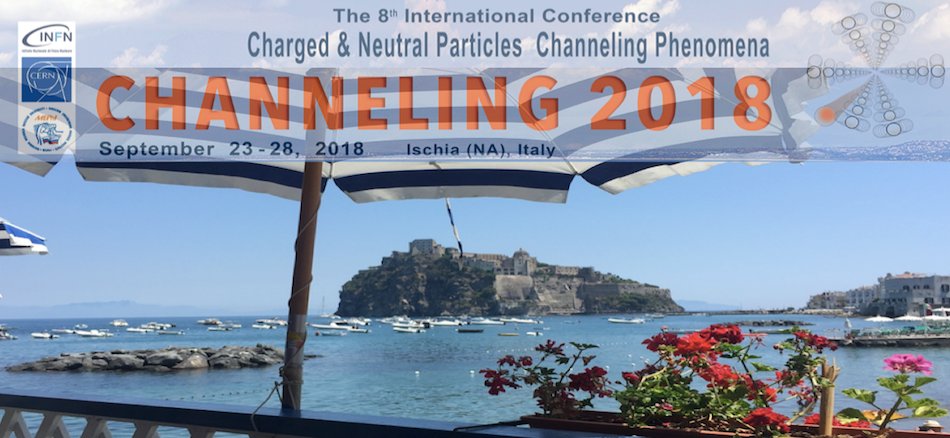Speaker
Dr
Nikolai Maksyuta
(Taras Shevchenko National University of Kiev)
Description
As shown in [1], the radial profile function of the probability density of localization of channeled hydrogen atoms in a carbon nanotube (CNT) has two clearly fixed maxima. One of them (the greater) is in the center of the CNT. The second maximum (smaller) is located in the region of the minimum of the averaged interaction potential of hydrogen atoms with the inner wall of a CNT. It was shown in [1] that the relationship between these maxima depends on the angular dispersion of the beam of hydrogen atoms: the central narrow maximum essentially decreases in magnitude with increase of angular dispersion and the second wide maximum increases by a small value at the same condition. The so-called focusing effect of channeled particles in a CNT is associated with the first maximum (see, for example, [2, 3]). With the second maximum, apparently, the so-called iris-scattering effect should be associated [4]. In this paper, the position and magnitude of this maximum are analyzed in detail.
Based on the one-particle Lennard-Jones potential we have calculated an exact potential for the interaction of a hydrogen atom with all CNT atoms, after which its expansion into a two-dimensional Fourier series was performed: one-dimensional reciprocal-lattice vectors and azimuthal harmonics. Taking into account only two terms in this expansion (one term corresponds to the so-called averaged interaction potential, and the second is a perturbation potential depending on the azimuth angle), the two-dimensional Schrödinger equation is numerically solved within the framework of the stationary perturbation theory and the levels of the transverse energy and the system of wave functions are found. Further, the probabilities of populating these levels by a beam of hydrogen atoms incident on the entrance of a nanotube with a certain angular dispersion are calculated. Finally, the probability density of localization the hydrogen atom in the CNT channel is calculated as a function of two variables: the radial coordinate and the azimuth angle. As a result, it is shown that this function is periodic in the azimuth variable with maxima between the longitudinal axes of the CNT.
Thus, in this paper it is shown on the basis of the quantum mechanical calculation that the system of periodically located maxima of the distribution function of the hydrogen atom in the CNT channel is associated with iridescence scattering studied within the framework of the classical approach, for example, in [5].
References
1. M. Maksyuta, V. Vysotskii, S. Efimenko / Abstract of the XXIX International Conference on Photonic, Electronic and Atomic Collisions, 22 – 28 Jule, Toledo (Spain), 2015, ICPEAC – Abstracts Available Online, TU – 152.
2. V.A. Aleksandrov, I.V. Lysova, A.S. Sabirov at al // Journal of Surface Investigation, 2012, V. 6, No. 1, P. 172 – 175.
3. I.V. Lysova // Journal of Surface Investigation, 2013, V. 7, No. 1, P. 130 – 132.
4. H. Winter, A. Schüller // Progress in Surface Science, 2011, V. 86, P. 169 – 221.
5. V.S. Malyshevsky, G.V. Fomin, E.V. Dergacheva, N.I. Jylina // Theses of the Reports of XLVIII International Conference on Physics of Charged Particles Interaction with Crystals, Moscow, 2018, P. 48.
Primary author
Dr
Nikolai Maksyuta
(Taras Shevchenko National University of Kiev)
Co-authors
Mr
Dmitriy Maksyuta
(aras Shevchenko National University of Kiev)
Ms
Eugene Dergacheva
(Southern Federal University, Rostov-on-Don)
Dr
Svetlana Efimenko
(Taras Shevchenko National University of Kiev)
Dr
Viacheslav Malyshevsky
(Southern Federal University, Rostov-on-Don)
Prof.
Vladimir Vysotskii
(Kiev National Shevchenko Univ, Kiev, Ukraine)
Dr
Аnatoly Sabirov
(Chuvash State University after I.N. Ulyanov, Cheboksary)

